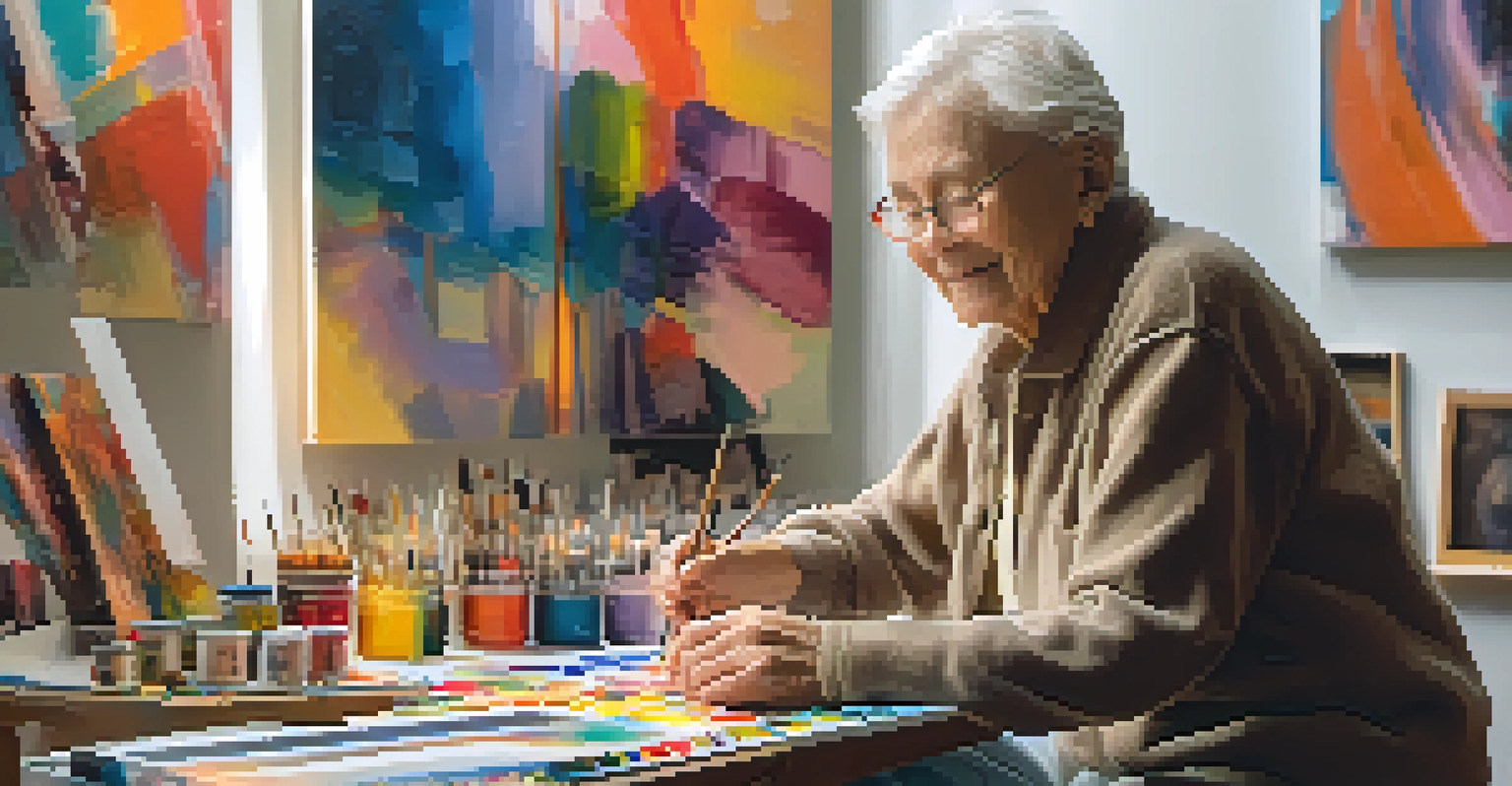Visual Storytelling: Art as a Medium for Emotional Connection

Understanding Visual Storytelling and Its Impact
Visual storytelling is the art of conveying narratives through images and visuals. It taps into our innate ability to process visual information more efficiently than text alone. This method creates a strong emotional connection, as visuals can evoke feelings and memories in an instant.
A picture is worth a thousand words.
Think about your favorite movie or painting; often, it's the visuals that resonate the most. They capture emotions that words sometimes struggle to express, making the audience feel deeply connected to the story. Through colors, shapes, and composition, artists can communicate complex emotions simply and effectively.
Related Resource
In a world overloaded with information, visual storytelling stands out by engaging viewers on a more profound level. It's not just about what you see; it's about how it makes you feel, forging connections that transcend language and culture.
The Role of Art in Emotional Expression
Art has long been a medium for expressing emotions, from the joyful strokes of Van Gogh to the somber tones of Edvard Munch. Each piece tells a story that reflects the artist's inner feelings, allowing viewers to connect with those emotions. This personal touch is what makes art such a powerful tool for storytelling.

When we look at art, we often see reflections of our own experiences and feelings. A painting might remind us of a cherished memory or evoke sorrow from a past loss. This ability to resonate with personal stories is what creates an emotional bridge between the artist and the audience.
Visuals Enhance Emotional Connection
Visual storytelling uses images to create strong emotional ties, allowing audiences to connect with narratives on a deeper level.
Moreover, art can communicate feelings that are often hard to articulate. Through visual elements, artists can explore themes of love, grief, joy, and hope, making their work relatable on various levels. This universality of emotion is what makes visual storytelling so impactful.
Elements of Visual Storytelling in Art
Several key elements come into play when creating a compelling visual story. Color, composition, and subject matter are just a few components that can drastically alter the emotional tone of a piece. For instance, warm colors like reds and oranges can evoke feelings of passion or warmth, while cooler hues may bring about calmness or sadness.
Art enables us to find ourselves and lose ourselves at the same time.
Similarly, the composition of a piece can guide the viewer's eye and influence their emotional response. A tightly framed portrait might create a sense of intimacy, while a wide landscape could evoke feelings of freedom or loneliness. Artists carefully consider these elements to craft stories that resonate deeply with their audience.
Related Resource
In essence, each brushstroke and detail in a piece of art contributes to a larger narrative. By thoughtfully combining these elements, artists can create a rich tapestry of emotion that invites viewers to engage and reflect on their own experiences.
The Power of Narrative in Art
Every great artwork tells a story, whether overtly or subtly. The narrative can be explicit, like a historical scene, or implied through symbolism and imagery. This narrative layer adds depth to art, inviting viewers to explore the story behind the visual and connect with it on a personal level.
For example, consider Picasso's 'Guernica,' which depicts the horrors of war. The chaotic forms and stark monochrome palette tell a powerful story of suffering and loss, evoking strong emotional reactions. Viewers are compelled to engage with the artwork, reflecting on the broader implications of the narrative.
Art Reflects Personal and Cultural Stories
Art serves as a powerful medium for expressing emotions and cultural narratives, allowing viewers to resonate with their own experiences.
Narrative in art isn't limited to traditional storytelling; it can also be about the artist's journey or the cultural context surrounding the piece. This multifaceted approach allows viewers to connect emotionally with the artwork, as they may see reflections of their own story or societal challenges within it.
Cultural Context and Its Influence on Emotion
Cultural context plays a significant role in how art is perceived and the emotions it evokes. Different cultures have unique symbols, colors, and historical backgrounds that influence their artistic expressions. Understanding these contexts can deepen our appreciation of the emotional layers in visual storytelling.
For instance, a piece of art from a culture that values communal experiences may convey feelings of unity and togetherness. In contrast, art from individualistic cultures might emphasize personal struggles and triumphs. These nuances highlight how cultural backgrounds shape our emotional responses to visual narratives.
Related Resource
Moreover, art often serves as a mirror reflecting societal values and issues. Artists draw inspiration from their environments, creating works that resonate with their communities. This connection fosters emotional bonds, enabling viewers to relate to the stories within the art on a profound level.
Art Therapy: Utilizing Visual Storytelling for Healing
Art therapy is a powerful application of visual storytelling that harnesses the emotional connection of art for healing. It allows individuals to express feelings that may be difficult to articulate verbally. By creating visual narratives, participants can explore their emotions and experiences in a safe environment.
This therapeutic approach encourages self-reflection and can lead to profound insights. For instance, someone dealing with grief might create a piece that symbolizes their loss, helping them process emotions and find closure. The act of creating becomes a form of storytelling, facilitating emotional release and understanding.
Digital Age Transforms Storytelling
Advancements in technology offer new platforms and interactive experiences for visual storytelling, enhancing emotional engagement.
Furthermore, art therapy can foster connections between individuals. Sharing their artworks in group settings creates a sense of community and mutual understanding. This shared experience reinforces the power of visual storytelling as a tool for emotional connection and healing.
The Future of Visual Storytelling in a Digital Age
As technology advances, the landscape of visual storytelling is evolving. Digital platforms allow artists to reach wider audiences, creating new opportunities for emotional connection. Social media, for instance, enables artists to share their narratives instantly, making art more accessible than ever.
Moreover, the integration of interactive elements in digital art can enhance viewer engagement. Virtual reality (VR) and augmented reality (AR) allow audiences to immerse themselves in the story, creating a multi-sensory experience. This innovation opens up new avenues for emotional exploration and connection.

However, the challenge remains to maintain authenticity and emotional depth in the digital realm. As we embrace these new technologies, it's essential to remember the core purpose of visual storytelling: to forge genuine emotional connections. By blending tradition with innovation, we can continue to celebrate the art of storytelling in meaningful ways.